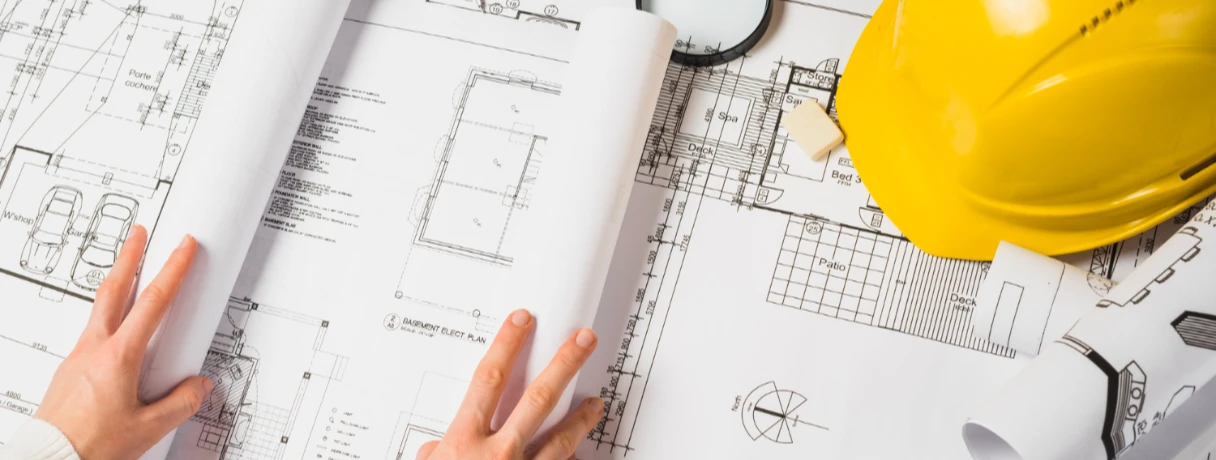The Estimator’s Everyday Challenge
Estimators know the routine all too well- endless specifications, tight deadlines, and the constant chase for accurate numbers.
A typical estimator’s day often involves:
- Sorting through hundreds of pages of specifications.
- Chasing vendors for updated quotes.
- Measuring, checking, and re-checking takeoff quantities.
- Juggling multiple bids under constant time pressure.
The result?
Hours lost to manual work, leaving little room for strategy, creativity, or client engagement. The real bottleneck isn’t skill- it’s the workflow.
Why Estimators Need AI More Than Ever
Even though construction has gone digital in areas like scheduling, project management, and safety, preconstruction still feels stuck in 2005.
Most estimators rely on:
- Spreadsheets for pricing
- Takeoff software for measurements
- Emails for RFQs
- Shared drives for plan storage
However, none of these tools communicate with each other. Each one adds friction and slows down the estimating process. By the time an estimator identifies a promising bid, completes a takeoff, and finalizes pricing, several other opportunities have already passed by.
The harsh truth stays: manual workflows limit growth.
From Skeptic to Believer: The Shift Toward AI Adoption
When AI adoption for estimators first entered the conversation, many professionals were skeptical. Could AI truly interpret drawings and grasp the nuances of complex construction plans? Would it overlook the details that only experience can catch?
But experience has proven otherwise:
AI isn’t here to replace estimators but it’s here to empower them.
Instead of starting every takeoff from scratch, estimators can now review AI-based takeoffs, reducing what once took hours to just minutes. This shift has transformed how estimators spend their time, allowing them to focus on:
- Competitor analysis and bid strategy
- Strengthening client and vendor relationships
- Identifying cost-saving opportunities across projects
AI hasn’t diminished the estimator’s value- it has amplified their role as strategic thinkers and decision-makers.
A real-world win: How AI delivered while the estimator was away
A few months ago, an estimator attended a week-long construction conference in Houston- right in the middle of a busy bidding cycle. Several bids were due back at the office, and under normal circumstances, meeting those deadlines would have been nearly impossible.
But this time was different. With AI-driven workflows from Beam AI handling the takeoffs, every project was ready by the time the estimator returned.
The result?
- Every bid was submitted on time.
- One of those bids, the one least expected to win- actually secured the project.
That moment made something clear: AI can keep the estimating process moving even when the estimator isn’t at their desk. It’s like having a tireless assistant that works quietly in the background, helping teams stay ahead, not just keep up.
The Future of Estimating: 2030 and Beyond
Here’s what I genuinely believe: by 2030, no estimator will be doing takeoffs manually.
The future of estimating will be defined by:
- AI systems that flag constructability issues early.
- Predictive cost analytics that uncover savings before bid day.
- Smart recommendations that optimize materials and reduce waste.
One example?
A client once shared plans before the official release. Using AI insights, we realized we could lower the site elevation by two feet. That simple adjustment:
- Cut down fill material costs.
- Improved our bid competitiveness.
- Won us the project.
That’s what AI adoption for estimators can achieve - faster insights, smarter decisions, and better results.
AI-Driven Workflows: Turning Estimators into Strategists
Tomorrow’s estimators won’t just crunch numbers - they’ll be preconstruction strategists. AI-driven workflows will allow us to:
- Identify trends across bids and projects.
- Analyze how design changes affect profitability.
- Collaborate with engineers, architects, and suppliers in real time.
No more hours wasted tracing PDFs. Instead, time will go into refining strategy, reducing risk, and winning more bids. That’s where the industry is headed - and it’s already happening.
Still Unsure About AI Takeoff Software? Start Small
If you’re hesitant, that’s normal. Start with one project. Let your team:
- Run an AI-based takeoff alongside your traditional process.
- Compare accuracy, speed, and effort.
- See firsthand how much time you save.
Once you feel the difference, you won’t look back. AI adoption for estimators isn’t a threat - it’s a liberation from repetitive work. And here’s a truth that every estimator should hear: AI doesn’t reduce your value. It reveals it.
Final thoughts
The construction world is evolving fast. Those who embrace AI adoption for estimators today will define the future of estimating tomorrow. AI isn’t the future - it’s the present, and it’s already reshaping how estimators work, think, and win.

.jpg)












.webp)

